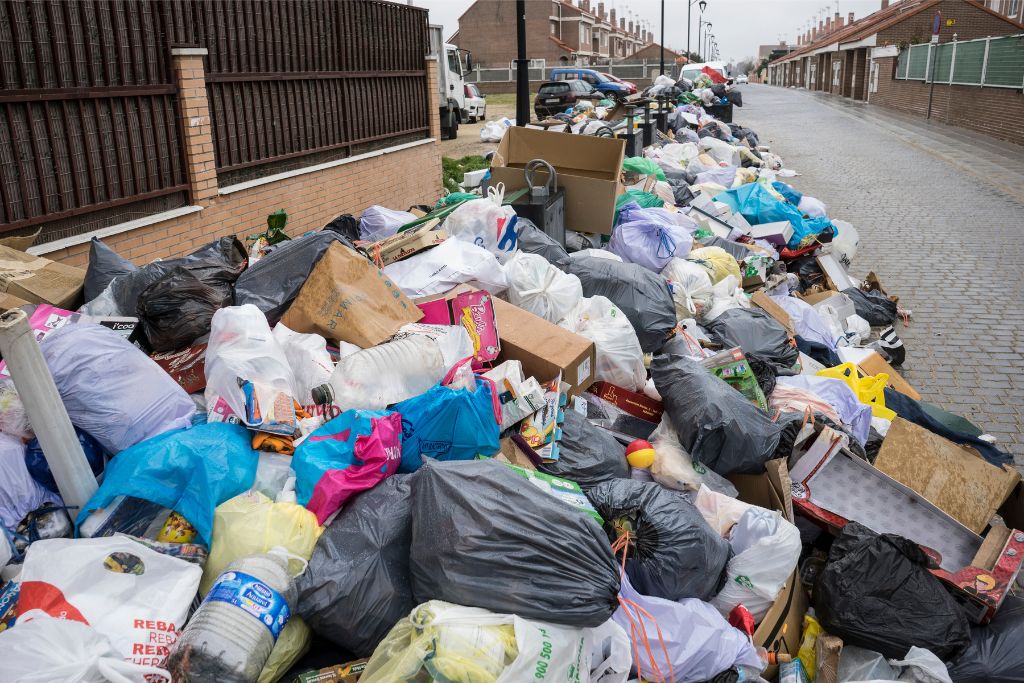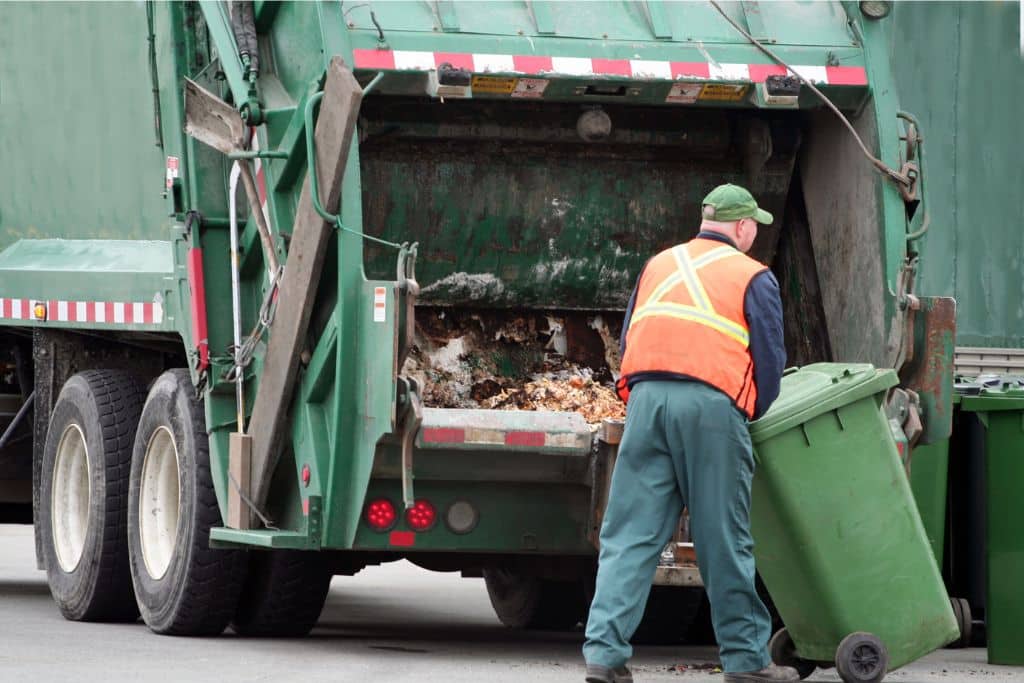The onset of ‘smartification’ has integrated itself into the various facets of sustainability including smart waste collection technology. With the rapid adoption and innovation of smart waste management technologies, waste collection has also developed into a greener and more efficient system. Prominent tech integrations include robots, sensor technology, and much more. Local authorities also continue to take advantage of smart solutions to prevent planet Earth from turning into a trash kingdom.
—–
So, when everything around us is getting “smartified”, why not use modern technologies to solve some of the most pressing environmental issues, for example to develop smart solid waste management systems?
The globe is slowly turning into a trash kingdom with the amount of garbage produced every day. Today, the world generates 2.01 billion tonnes of municipal solid waste annually and the number is expected to grow to 3.40 billion tonnes by 2050. In comparison, this is more than double the population growth that is expected over the same period.
Nowadays, solid waste management operations are primarily local government responsibilities in the majority of nations, and almost 70% of countries have institutions in place to handle policy creation and regulatory monitoring in the waste collection sector.
When this much waste needs to be managed by governments and local authorities, smartification plays an important role in streamlining the process.
The “smartification” trend has been innovating how we live for quite some time now. We are experiencing it in smart cities, self-driving cars, and even the innovative little smartphones that we are so attached to.

The world generates 2.01 billion tonnes of municipal solid waste annually, with the number is expected to grow to 3.40 billion tonnes by 2050.
You might also like: 4 Commonly-Used Smart City Technologies
Conventional Waste Management Is Becoming Ineffective
Green initiatives and sustainable solutions are being adopted by several metropolitan areas. By leveraging technology and innovation to improve existing systems, cities are becoming smarter, more resource-efficient, and more resource-saving.
Waste collection systems urgently require an upgrade from traditional, inefficient management processes.
Most garbage collection systems in use today are manual and perform pick-ups that are either unnecessary or tardy. Unnecessary pickups increase annual collection expenses by 70%. Moreover, frequent route congestions, which often results from ineffective route planning, also raise the volume of gasoline consumed to carry out the collections. The whole process contributes to an increase in carbon footprint by 50%.
Such issues could be easily resolved with the use of Internet of Things (IoT) waste management technologies to help plan a more efficient route for garbage trucks. IoT sensor technologies can be used to assess whether it is necessary to empty trash cans. Its flexible trash management approach benefits residents, businesses, and organisations alike.
Modern waste management and collection methods are now used in smart cities. In tune with that thought, IoT technology is being adopted by the garbage industry more and more. In smart technology applications including trash data collection, in-the-moment camera-based monitoring, cart chip/sensor technology, and logistics optimisation for vehicle fleets, asset scanning is already deployed as a measure to improve efficiency.
On a global scale, an increasing number of waste management organisations are also implementing the use of industrial IoT systems to track vehicles, waste, drivers, and clients to improve every facet of such essential services rendered.
The result of several unique solutions integrated here is smart waste collection technology. Smart waste management is a broad term for any system or application that uses this technology to improve trash management. This means that smart waste management, made possible by technology, is more efficient, cost-effective, and environmentally friendly than the traditional one that we have been using.
Innovative Technologies Acting As Catalyst To Smart Waste Collection Technology
Several technologies are fuelling the smartification of waste management today. Smart waste collection technology is adapting to the modern needs of smart cities and developing urban landscapes.
Mentioned below are some of the technologies that are being implemented across the globe to create a positive impact toward saving the environment, and preventing our planet from turning into a trash kingdom.
1. Smart Waste Bins
The smart bin’s technology uses artificial intelligence to redirect waste effectively, and inexpensively, with the least amount of manpower required, and with the least amount of traffic congestion. A smart bin can be made by combining several technologies, such as Artificial Intelligence of Things (AIoT), computer vision, robotics, RFID tags, Near-Field Communication (NFC), sensors, wireless sensor networks, compactors, actuators, intelligent monitoring systems, and dashboards.
Today, businesses can directly receive insights into their recycling materials, owing to the smart bin – TrashBot’s integration, with a real-time monitoring dashboard. The custodians can streamline their workflows and spend less time checking bins owing to the monitoring indications. A smart bin analytics platform enables units to conduct garbage audits, assess diversion rates, and estimate possible cost savings. So, by employing smart bins, users may maximise the recycling potential of recyclables.
Occasionally, when left to their own devices, people fail to sort their garbage into the proper trash or recycling bins. The Polish business Bin-e created a smart trash can that automatically sorts recyclables into several compartments using artificial intelligence-based object identification in an effort to eliminate erroneous recycling sorting. After sorting, the waste is compressed, and the system monitors how full each bin is.
Intelligent bins eliminate human errors from the initial sorting procedure, speeding up and simplifying the material processing for recycling facilities. This can greatly increase worker productivity and cut waste management expenditures by as much as 63%.
2. Sorting Waste With AI
The Louisville, Colorado-based company Amp Robotics is creating gear and software that uses image analysis to sort recyclables with far higher accuracy and recovery rates than common for conventional systems.
Similar efforts are being made by Bulk Handling Systems, Machinex, and Tomra as well as other businesses to automate recycling processes using AI and robots. There are currently hundreds of waste-sorting facilities using the technology all around the world. By preventing recyclables from ending up in landfills and making them easier to reprocess and reuse, expanding their use will reduce waste and benefit the environment.
The waste management sector is heavily reliant on artificial intelligence, and an increasing number of waste processing facilities are turning to this technology to improve operational efficiency. Items can be recognised based on their composition and class, for example, by scanning mixed-up recyclables with AI computer vision.
The entire sorting and picking procedure at a waste processing plant can be automated using AI in combination with robotic sorting equipment. Robotic sorting equipment will swiftly and effectively separate the recyclables into single material streams once the AI system uses computer vision to detect materials.
Today materials recovery facilities (MRFs) can precisely identify a variety of materials because of Recycleye Vision – a ground-breaking technology that categorises co-mingled recycling into 28 separate classifications.
For instance, using AI plastics classes, recyclable plastic can be divided depending on the type of plastic it is made of, as well as the colour and shape of the plastic. Recyclates (individual recyclable products) are in separate material streams once recyclables have been collected and sorted. These pieces are then compressed and compacted into a cube using a recycling baler to enable easy storage and transportation. A wire baler can also be used to tie up each cube, ensuring that it keeps its shape and keeps things from slipping out.
Any trash processing facility needs a baler machine since it is the final stage in getting the materials ready to be shipped to a reprocessing plant. It is crucial to utilise a baler machine to compact all the recyclable materials as much as possible because decreasing the size of the recyclable materials significantly lowers transport expenses.
You might also like: How Waste Management in Germany is Changing the Game
3. Robots Managing Sorting Waste
In 2009, San Francisco passed an ordinance requiring all residents and businesses to sort their waste into recyclables, compostables and landfill trash, making it the first American city to make composting mandatory. Nowadays, the city diverts about 80% of its waste from landfills every year, boasting one of the highest recycling rates in the US.
San Francisco, already at the forefront of the zero waste movement, achieved this in part through its partnership with Recology, a waste collection company, which spent US$20 million modernising its facilities and putting in a squadron of robot sorters to efficiently and precisely sort recyclables.
4. Waste Level Sensors
Waste level sensors allow users to instantly see how full each waste bin is, allowing them to plan ahead and take data-driven actions. Waste collection employees may arrange how collections are carried out, focusing only on the locations of full garbage cans, with the help of a live monitoring platform.
The cost of garbage management can be very expensive for local governments. Trash collection is sometimes the largest single budget item for communities in less affluent nations. Also, the cost of managing trash is rising globally, which has a particularly negative impact on low-income areas. When voters expect the same or better municipal services, it frequently leads to an even bigger conundrum of budget cuts.
When combined with a fill-level monitoring platform, waste-level sensors offer solutions to financial problems by cutting garbage collection expenses by up to 50%. With fewer collections, less money is available for driver time, fuel, and truck upkeep.
At its worst, the lack of an effective means of trash collection exposes the expanding populace to an environment that serves as a breeding ground for bacteria, insects, and rodents. This environment also encourages the development of diseases that are conveyed by the air and water. It is at the very least an eyesore and a public nuisance, particularly in large urban regions that heavily rely on tourists to fund municipal services.
By alerting operators to such situations in advance, waste-level sensors and real-time fill-level data gathered through monitoring platforms significantly prevent garbage overflow.
Final Thoughts
The secret to developing smart waste management services that are suitable for both now and tomorrow is to integrate a data-driven strategy into the way we manage garbage.
Smart waste collection technology is the first step in maximising resources and integrating more sustainable procedures into waste services. With sensors, digital platforms, intelligent routing, and container monitoring, we have all the solutions we need to improve our waste management system.
You might also like: 3 Waste Management Solutions from Around the World

















